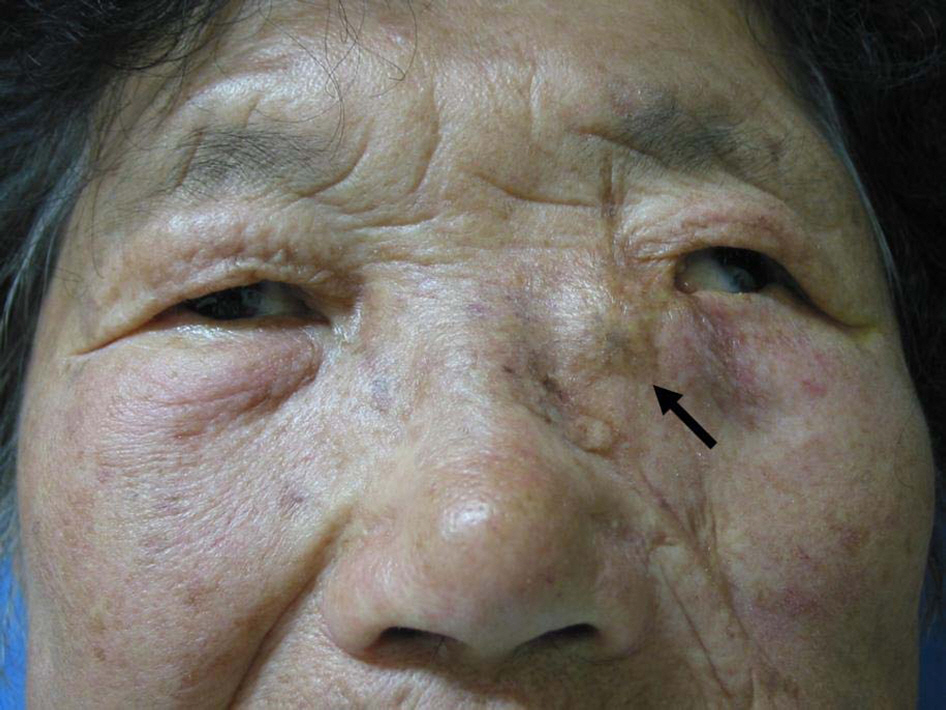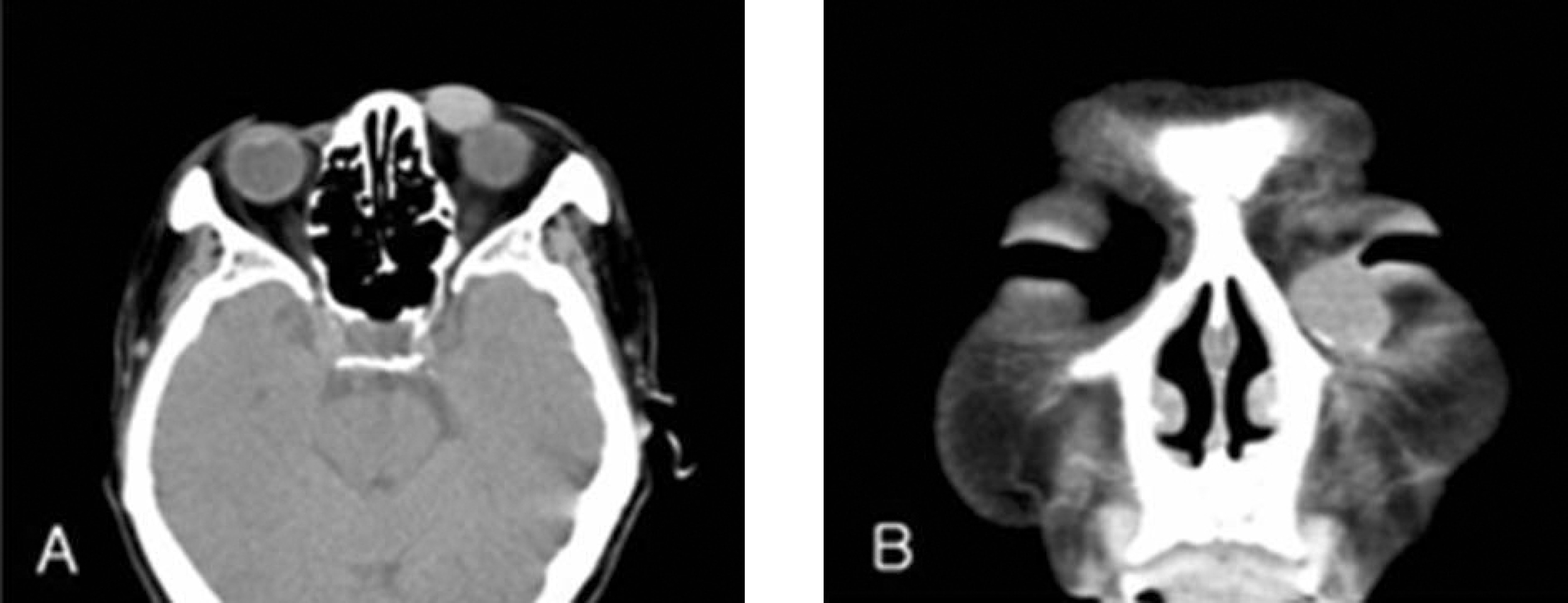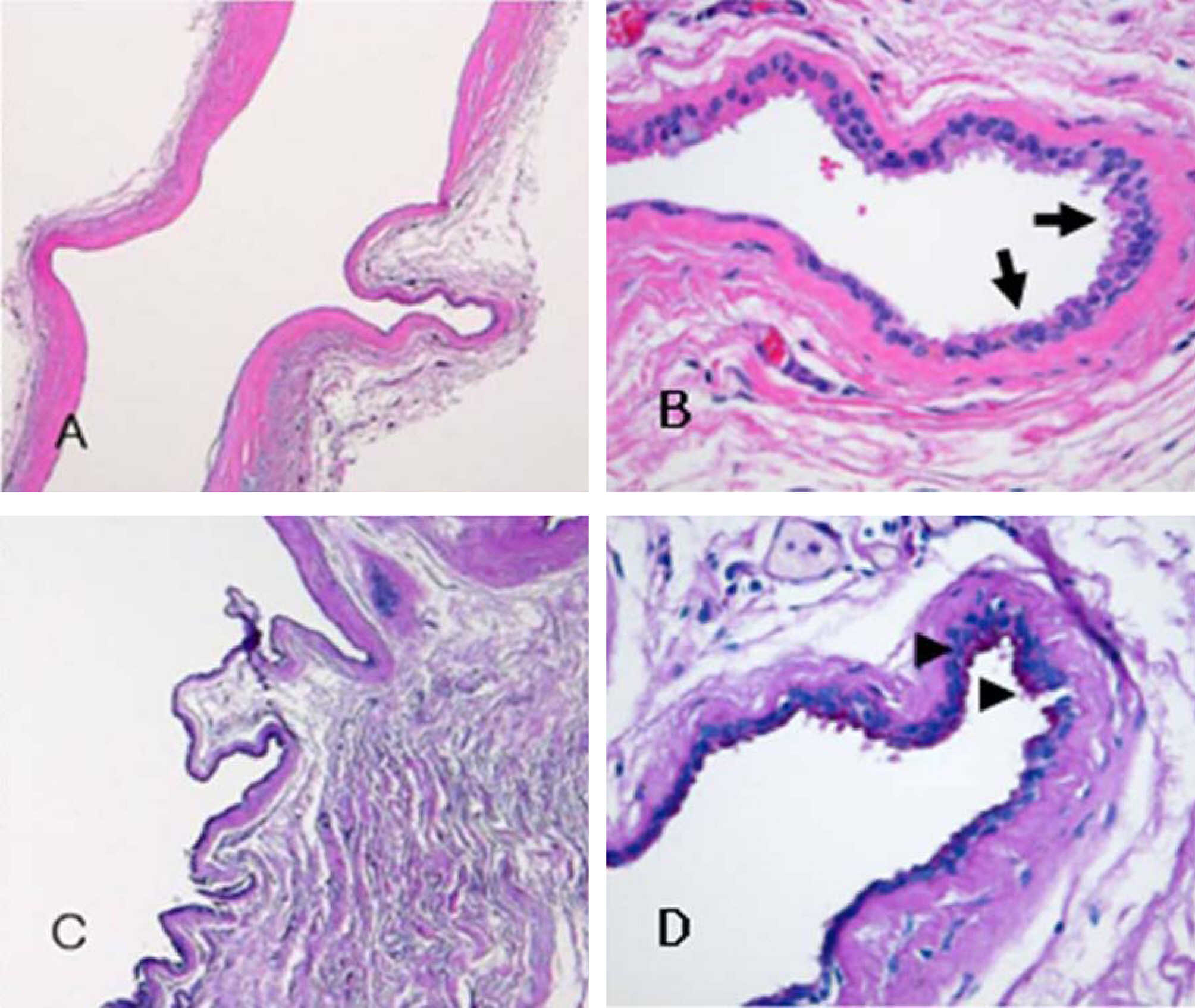J Korean Ophthalmol Soc.
2007 Nov;48(11):1562-1566.
Apocrine Sudoriferous Cyst in Medial Canthal Region Occurred after Trauma
- Affiliations
-
- 1Department of Ophthalmology, College of Medicine, Chungnam National University, Daejeon, Korea. sblee@cnu.ac.kr
- 2Chungnam National University Research Institute for Medical Sciences, Daejeon, Korea.
Abstract
-
PURPOSE: To report a case of apocrine sudoriferous cyst in the left medial canthal region occurred after trauma.
CASE SUMMARY
A 75-year-old woman was referred for mass in the medial canthal region after trauma. The patient had got injured and been sutured on left medial canthal region when she was 11 years of age. The painless mass in the left canthal region has occurred after that. The orbital computed tomography showed a 20 x 12 x 19 mm-sized cystic mass. On physical examination, left telecanthus, left exotropia and left hypertropia were also observed. The cyst contained turbid grayish fluid and was removed completely through transcutaneous incision. On histopathologic examination, the cyst was confirmed to apocrine sudoriferous cyst lined by two-layered cuboidal epithelia.
Figure
Reference
-
References
1. Wiliam HS. Eyelids and Lacrimal Drainage System. Jurij RB, editor. Ophthalmic Pathology. 4th ed.4. Philadelphia: W.B Saunders;1996. v. 4. chap. 11.2. Haider E, Saigal G, Gill D, et al. Congenital orbital sudoriferous cyst: radiological findings. Pediatr Radiol. 2005; 35:1142–4.
Article3. Rosen WJ, Li Y. Sudoriferous cyst of the orbit. Ophthal Plast Reconstr Surg. 2001; 17:73–5.
Article4. Mims J, Rodrigues M, Calhoun J. Sudoriferous cyst of the orbit. Can J Ophthalmol. 1977; 12:155–6.5. Robinson AR. Hidrocystoma. J Cutan Genitourin Dis. 1893; 11:293–303.6. Saunders JF. Congenital sudoriferous cyst of the orbit. Arch Ophthalmol. 1973; 89:205–6.
Article7. Park SJ, Jang JW, Chin HS. Sudoriferous cyst of the Orbit. J Korean Ophthalmol Soc. 1998; 39:1288–90.8. Charles NC, Saunders J. Letter: Sudoriferous cyst. Arch Ophthalmol. 1974; 92:89.9. Shields JA, Shields CL. Atlas of orbital tumors. 1th ed.Philadelphia: Lippincott Williams & Wilkins;1999. p. 19–43.
- Full Text Links
- Actions
-
Cited
- CITED
-
- Close
- Share
- Similar articles
-
- Sudoriferous Cyst of the Orbit
- A Case of Idiopathic Orbital Sudoriferous Cyst in an Adult
- Medial Canthal Reconstruction with Bilobed Flap
- Surgical correction of medial canthal widening associated with aging: two case reports
- The Direct Medial Canthal Approach in the Repair of Blowout Fracture of the Medial Orbital Wall




